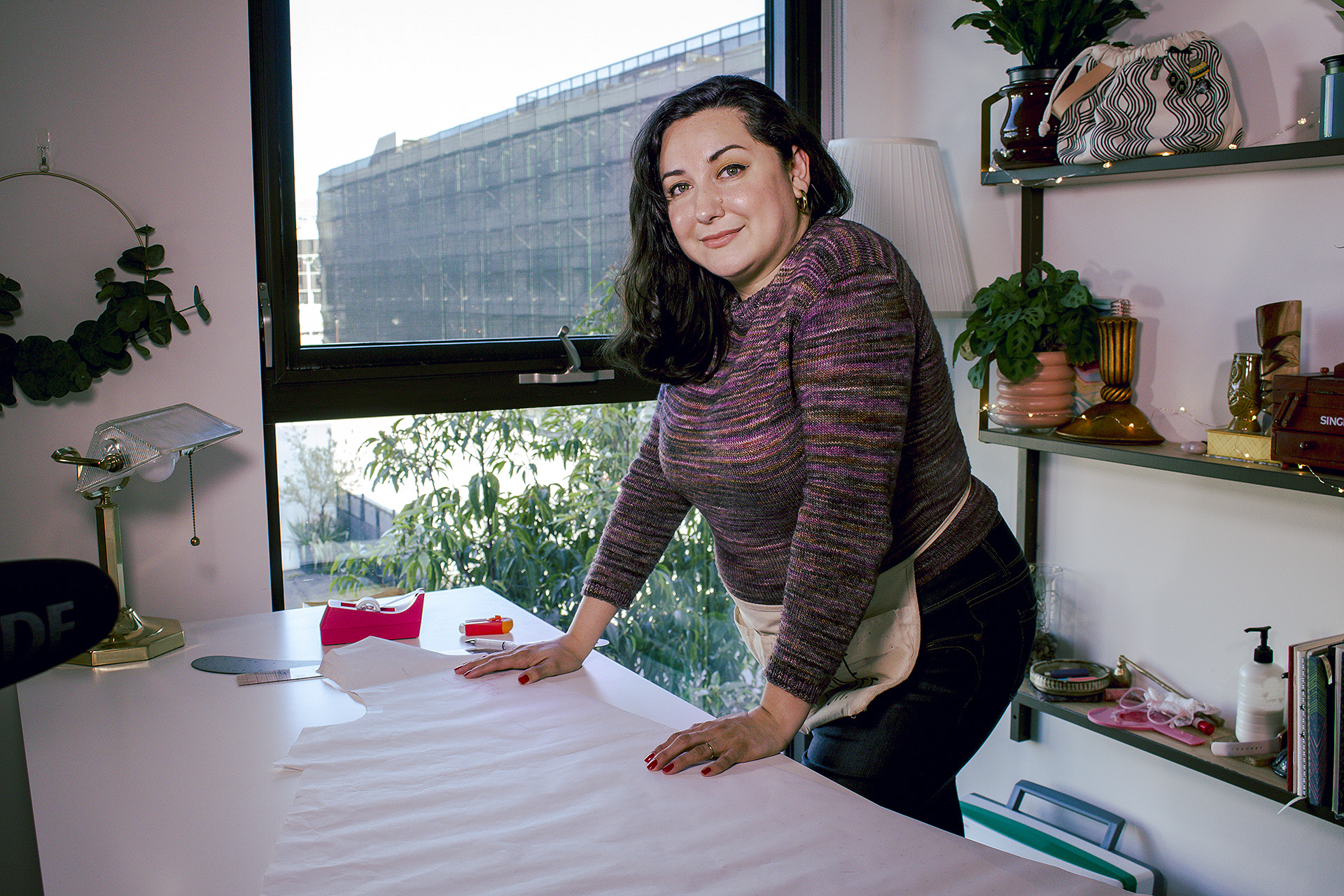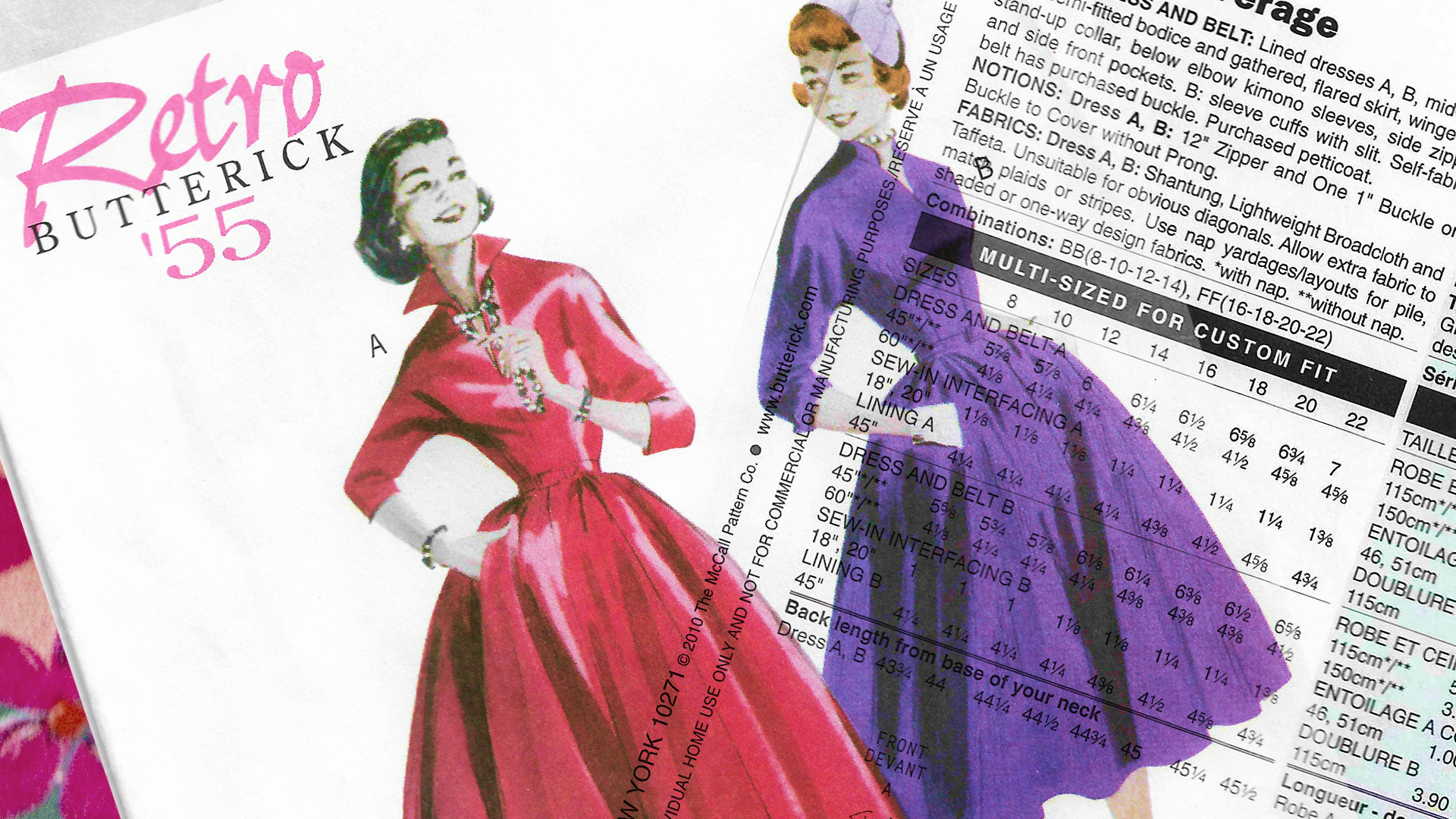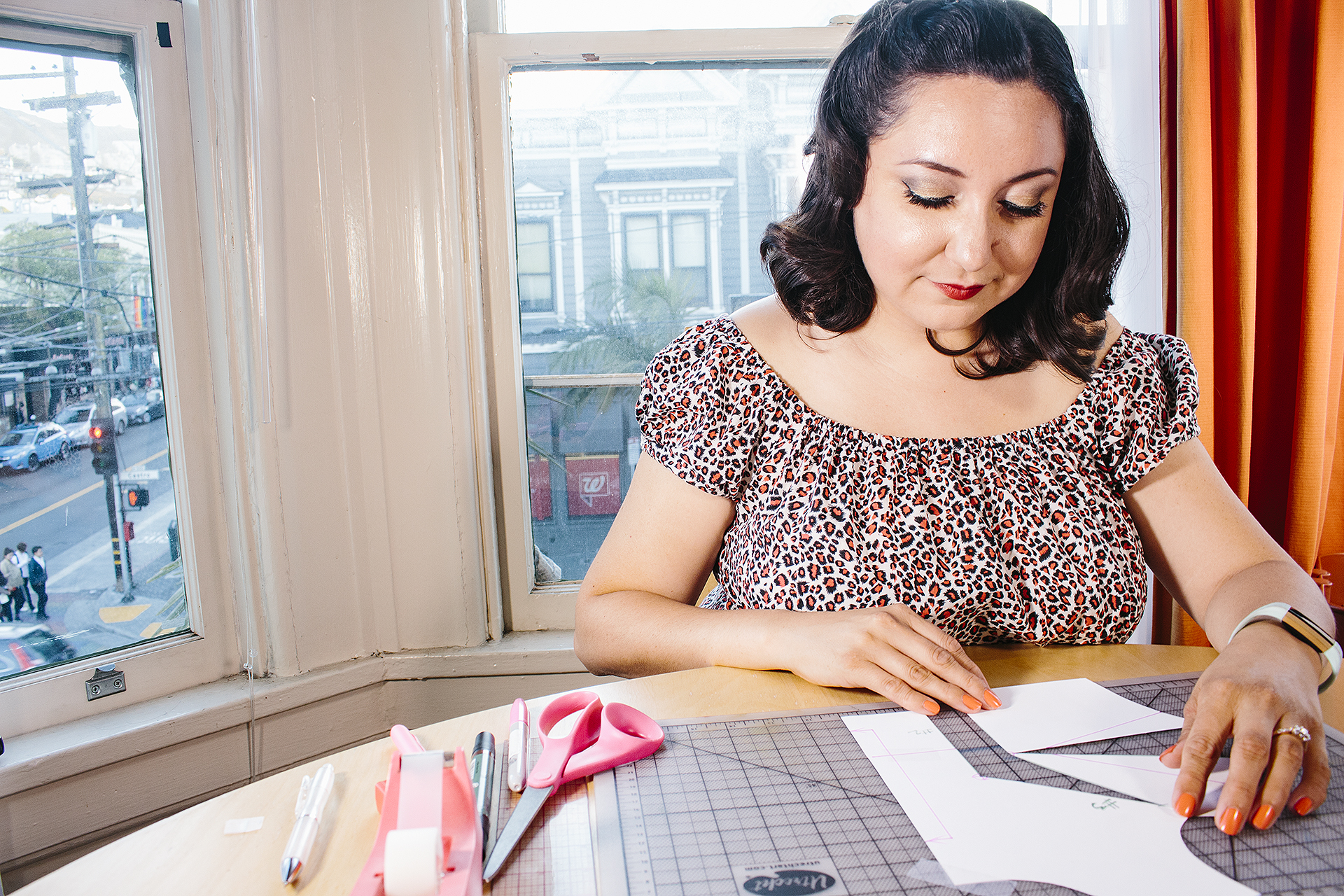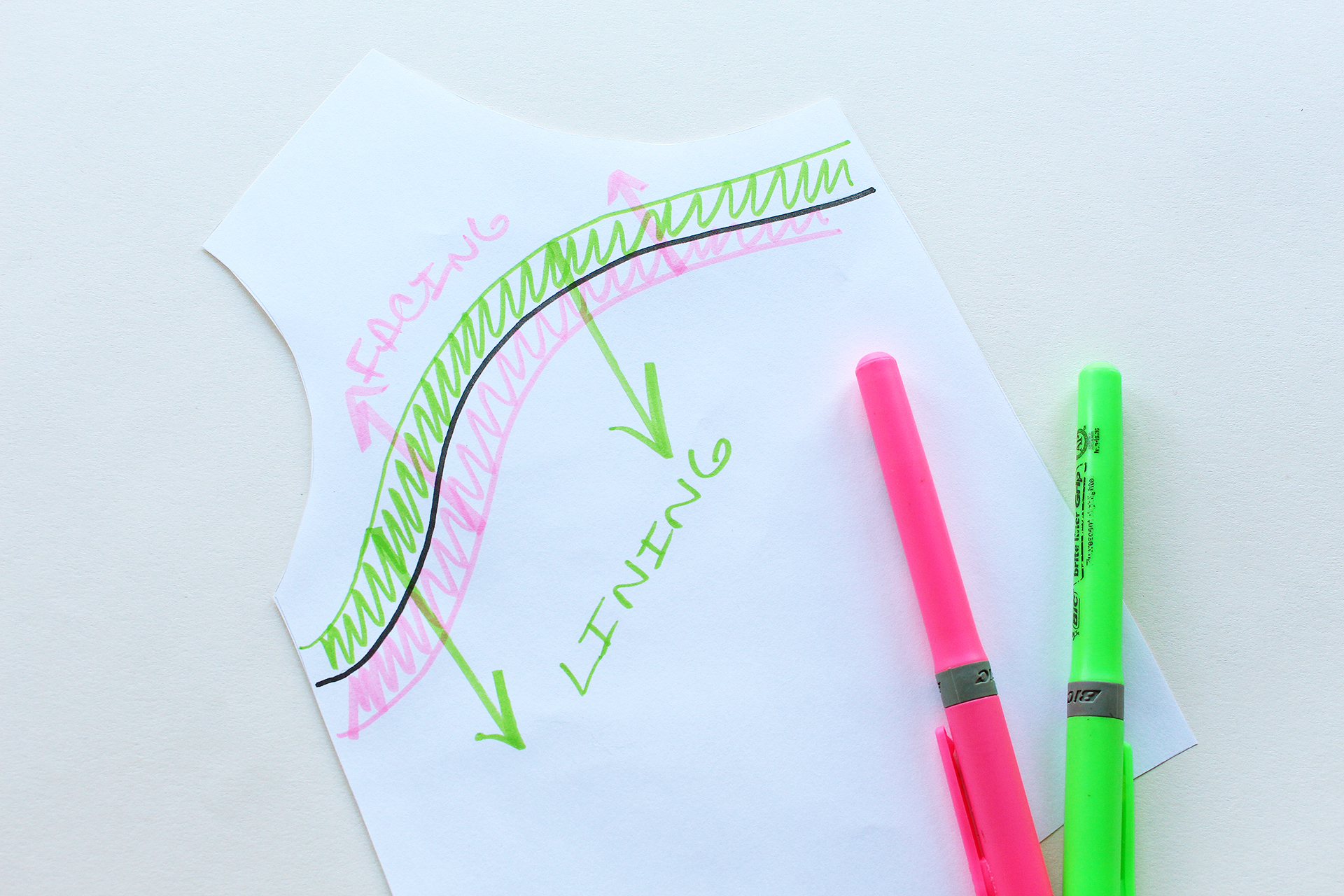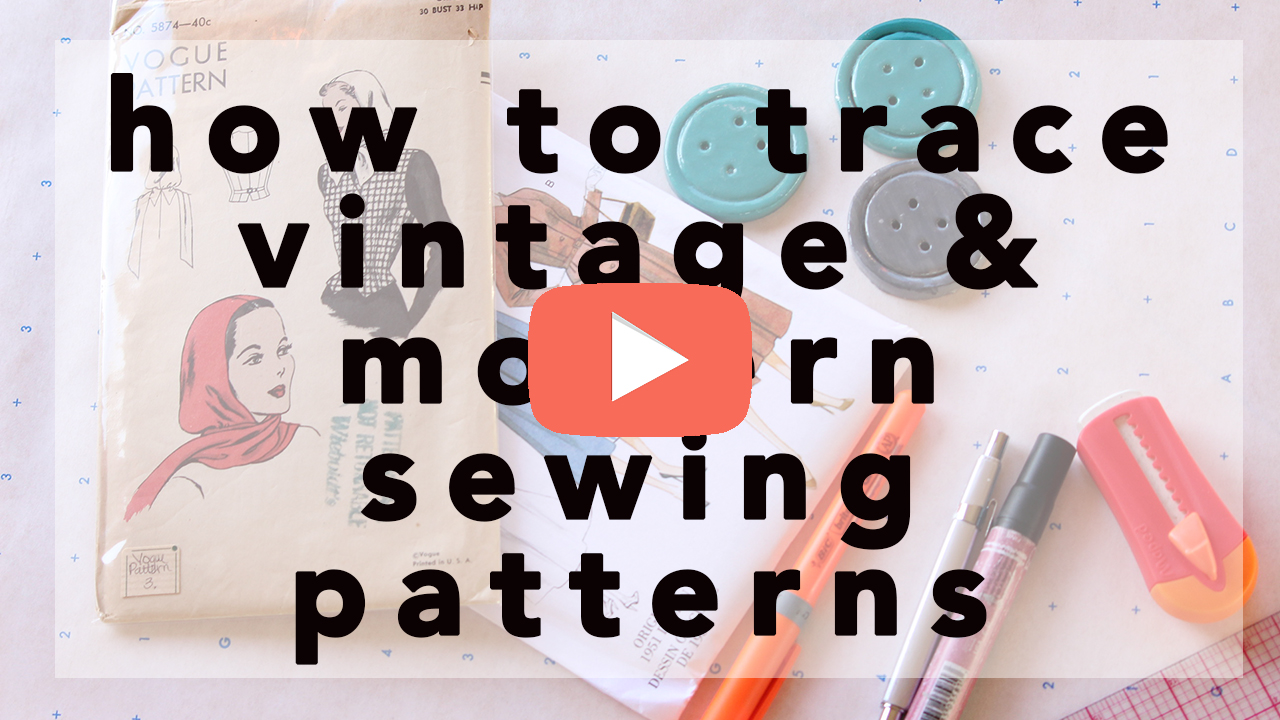Petite adjustments aren’t difficult! To achieve the right fit, it’s all about knowing where to look on a sewing pattern to make them possible.
Knowing which areas are important for Petite adjustments is half the battle.
Let’s break down the biggest differences between regular Misses’ sewing patterns and Petite sewing patterns:

The average Petite person is usually around 5’2”, with most Misses’ sewing patterns drafted for 5’5”. Imagine those differences split across the form proportionally.
These Petite adjustments usually need to drafted across *multiple* areas on a sewing pattern.
Watch for these areas where petite adjustments should be taken into account:
- The distance between shoulder points (to account for a narrower frame)
- The distance between shoulder and bust point, down the body (to account for bodice height)
- The distance between bust point and waist (to account for bodice height)
- The distance between waist and knees (to account for overall height)
- The distance between knees and ankles (to account for overall height)
To illustrate this, let’s see how this manifests in a real bodice.
NOTE: I’m 5’2”, DD-cup, and wear a size L/XL.




In the above sample piece, you can see a few areas which stand out:
- The shoulder points are too wide (by over an inch!) so the sleeveless shoulders stick out past my body
- The entire area above the bust point is exposed at the arm scythe (note how much fabric billows out, exposing foundation garments)
- The bottom of the arm scythe is also too low
- The waist has been hacked to be higher (see my previous video with this sample dress), but was originally over 2.5” too low. Even with the previous hacky adjustment, it’s still too baggy.
The recommended Petite adjustments below will help tackle those issues.
Narrow Shoulder Adjustment [Timestamp 05:13]
This adjustment brings the shoulder points closer to the center point of the body, more in line with a Petite person. There are a couple different ways to do this adjustment, one which involves taking out width from the shoulder corner itself (demonstrated in the video) and another which notches and pivots the corner. Both options are worth exploring, so definitely experiment with which way works for you!
Shorten the distance from bottom of the arm scythe to shoulder [Timestamp 06:43]
The distance from the top of the shoulder to the arm scythe tends to be longer in Misses sizes. For Petite adjustments, identify that distance with your muslin, pinching out an equal amount from arm scythe to center front. Once you have that number, you can slash and overlap your pattern pieces for a better fit above the bust to the shoulder.
Raise the arm scythe, if needed.
Depending on the depth of the arm scythe (or if it was as drastically low as in the example images,) redraw a higher arm scythe, making sure it matches the back of the pattern by walking the pattern.
Redraw the waist/shorten the bodice under the bust [Timestamp 07:58]
Check your personal measurements from bust point to waist and adjust the waist height accordingly. In the example pattern, because it was a simple trapeze style, I could redraw the waistline. For more fitted bodices, slash and overlap the needed distance.
After completing the above changes, my updated pattern with Petite adjustments looked substantially better.



Knowing where your body’s measurements sit in relationship to the pattern block will save you *so much* stress, especially if you have to do Petite adjustments.
Taking time to understand where a sewing pattern should be shortened or taken in, you can more confidently identify where Petite issues will occur.
This is particularly useful if shopping ready to wear: you know ahead of time when a garment isn’t fitting right off the hanger.

And remember, just because you have a large bust or waist doesn’t mean you’re not Petite. Make sure to make a muslin to double check!

Like what you see?
